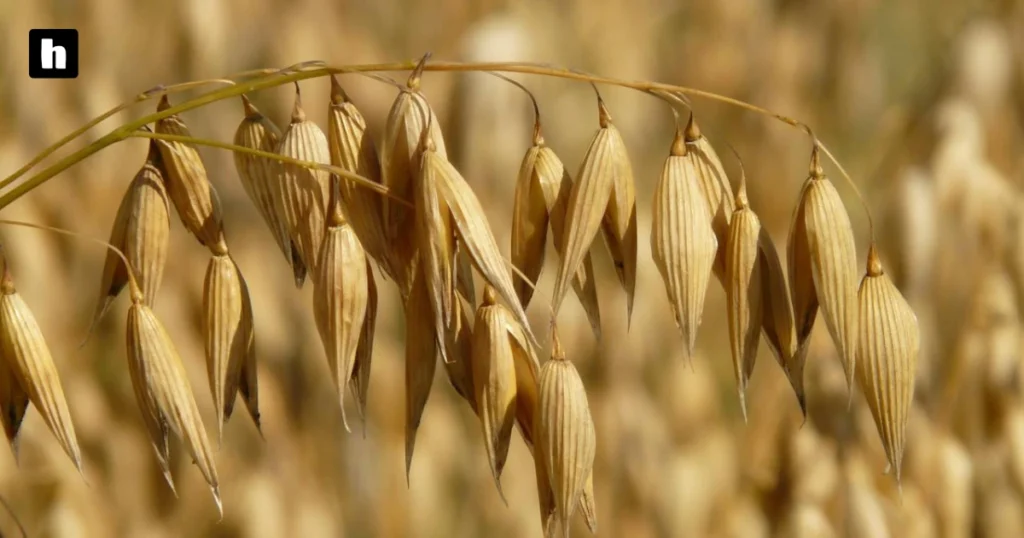
If you’re like me, you think a lot about the origins of your food. Where does your food come from? In the world of grains and cereals, confusion often arises regarding the origins of oats and their relationship to wheat. Many people wonder if oats come from wheat.
Like rice, oats are also recognized globally, but there is still a lack of information regarding their cultivation, processing, and origin. This is a frequently asked question, especially due to the increasing incidence of gluten intolerance.
In this article, we will discuss the specifics of oats, what they are, where they are from, and why they are different from or like wheat.
Adding oats to your diet can have many benefits, and the more knowledge you gain about these benefits, the happier you will be when including them in your diet.
Do Oats Come From Wheat?
No, they do not come from wheat; wheat and oats have distinct origins. Oats are not derived from wheat but rather from the Avena sativa plant, a member of the grass family (Poaceae). They are typically planted in spring or early summer and thrive in cool, temperate climates. The oat plant undergoes a series of growth stages, eventually producing mature oats that are ready for harvesting. Once harvested, the oats undergo a milling process to remove the outer husks, resulting in oat groats. These groats can be further processed into different variations, such as rolled oats, steel-cut oats, oat flour, and oat bran.
In contrast, wheat comes from the Triticum genus, which includes common wheat (Triticum aestivum) and durum wheat (Triticum durum). Wheat has been a fundamental crop for thousands of years, playing a significant role in the advancement of agriculture and human civilization.
Different Between Oats And Wheat
- Oats and wheatgrass both belong to the cereal grain family, which is a type of grass. However, it is important to note that oats and wheatgrass are different species within this group.
- Wheat, a type of grass with seed similarities to oats, encompasses a diverse range of varieties. Among these, the most renowned is the common wheat, scientifically known as Triticum aestivum, belonging to the Triticum family.
- Compared to wheat, oats are free of gluten as well. Avenin, a protein found in oats, is related to wheat gluten. But it’s not precisely the same. One of the proteins found in oats is avenin.
- Raw oats are generally regarded as safe for people with gluten sensitivities or allergies. It is important to read the label of any product you purchase if you have a serious allergy.
- Oats are naturally gluten-free, but that doesn’t mean their packaging or processing were done in a gluten-free environment.
- Oats and wheat are similar in terms of their nutritional content, but oats are slightly superior to wheat. Compared to wheat, oats are higher in fiber, healthy fats, and protein. Additionally, oats are higher in vitamins and minerals.
Benefits of Oats
When you hear the word “oatmeal,” you most likely picture porridge, or oatmeal, one of the most highly regarded hot breakfasts ever.
Oats are a fantastic source of protein for breakfast and are quickly gaining traction as a substitute for whole grains in a wider variety of recipes.
Oats can be used for lunch or dinner in the same manner as for breakfast if you’re trying to avoid wheat or rice. You can do more with oats than just have a satisfying meal.
If you’ve ever bought skin care or hair products, you may have noticed that some of them contain oatmeal or oat milk. Oats can support skin strength and hydration.
Related:
- Are Oats and Oatmeal Gluten-Free? You Need to Know
- Is Oat Milk Gluten-Free? Investigating the Facts
- 7 Disadvantages Of Eating Oats Daily
- Is It Safe to Eat Expired Oats?
Oats’ Nutritional Advantages
Oatmeal is full of reasons to be happy, but let’s start with the fact that it has a very high fiber and protein content.
It’s common knowledge that protein and fiber can make you feel fuller for longer periods of time. This will assist you in consuming fewer calories on a daily basis and lessening mealtime cravings.
It is easy to see why so many people depend on oats to help them reach their weight-loss objectives.
Oats contain fiber, which improves digestion, lowers blood pressure, and regulates cholesterol levels.
A variety of vitamins and minerals are also present in oats, and they all work together to keep your body healthy.
Wheat and oats have comparable nutritional profiles, but oats are superior in almost every way, with the exception of having slightly more calories overall.
Nevertheless, the increase in fiber, healthy fats, and protein levels is much more significant.
When it comes to B vitamins, both grains are great, but oats have a slightly higher concentration of all the vitamins that are hardest to get from food.
Both B2 and B6 are abundant in wheat, but since they are more commonly found in food items, it is easier to get the recommended daily intake.
What Does Oats Look Like?
Avena sativa, also known as the oat plant, is a type of grass that bears a striking resemblance to oats and can be found growing in wheat fields. As the plant matures, it develops seed fronds that have a fluffy appearance similar to wheat leaves.
Oats are harvested while still in their husks, which are layers of paper that provide protection. The grains inside have sharp ends and a yellow-tan appearance similar to that of rice.
The oats you buy at a store have already been rolled, chopped, or crushed. Depending on the type of oat, steel-cut and crushed oats are tiny bits that could be uneven, even to the extent of being somewhat powdered.
When oats are rolled, they become flat and form tiny, off-white discs. The type of oats you buy will determine their thickness; instant oats are typically thinner.
Do Oats Contain Protein?
Vegetarians and vegans especially adore oats because they are a great plant-based protein source and a good source of protein.
Compared to other grains, oats have a higher protein content; a 100-gram serving has approximately 17 grams of protein.
Depending on the particulars of each person, these 17 grams may make up as much as 35 percent of their daily protein intake.
Oats contain a primary protein that is very similar to the proteins found in legumes. Though their amino acid profile is more varied than that of any other grain, they are not thought of as a complete protein.
Do Wheat Germs Go Bad?
If wheat germ is not stored, it can easily go bad and turn rancid. Protecting the wheat germ from temperature and humidity fluctuations that could result in condensation around the germ is the most important factor in ensuring its safety.
Put the germ inside an airtight-closing glass or steel container to preserve it. If you would rather, you can use an airtight bag, but the wheat germ will last longer in a more substantial container.
After it’s sealed up, store it in your refrigerator or another dry, cool location away from the sun. It may go on for roughly a year. To extend the life of wheat germ, it can be frozen.
The bottom line
Wheat and oats are two different grains, each with a distinct personality. As members of the Avena genus, oats are praised for their high nutritional content and lack of gluten; however, care must be taken to prevent cross-contamination. Although wheat, which belongs to the Triticum genus, is a common ingredient in many recipes, people who have gluten sensitivities may have difficulties. Making educated decisions about these vital grains in our daily diets requires an understanding of the botanical, nutritional, and culinary differences between oats and wheat.
Frequently Asked Questions
1. Are oats healthier than wheat?
While both oats and wheat are nutritious grains, their nutritional profiles differ. While wheat has more protein and is a good source of important vitamins and minerals, oats are especially rich in fiber, which can aid in digestion and cholesterol management. In the end, dietary needs and personal preference will determine which of the two grains is preferred.
2. What are common culinary uses for oats and wheat?
Oats are frequently used in granola and oatmeal, but wheat is a versatile grain that can be used to make a wide range of foods, including baked goods, pasta, and bread.
3. Where do oats come from?
Oats come from the seeds of the Avena sativa plant, commonly known as the oat plant.


